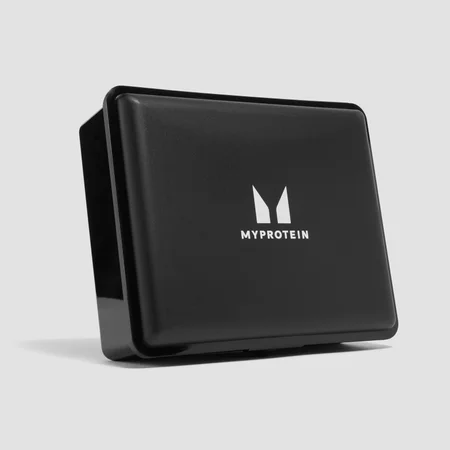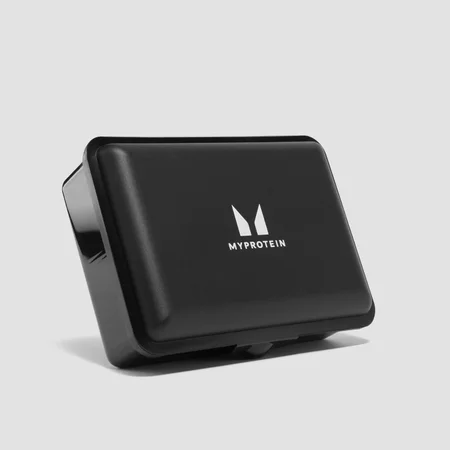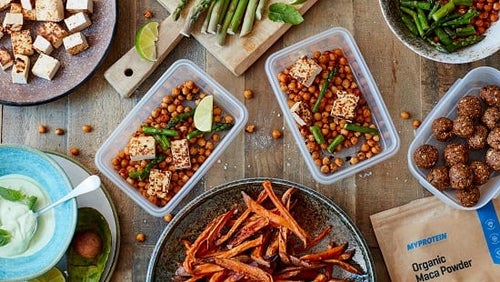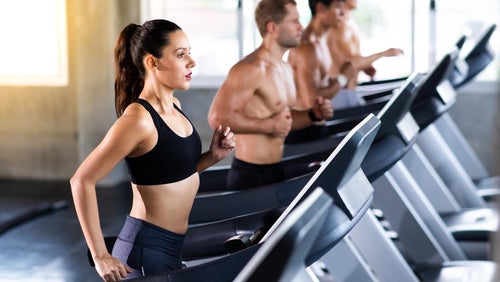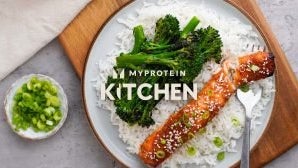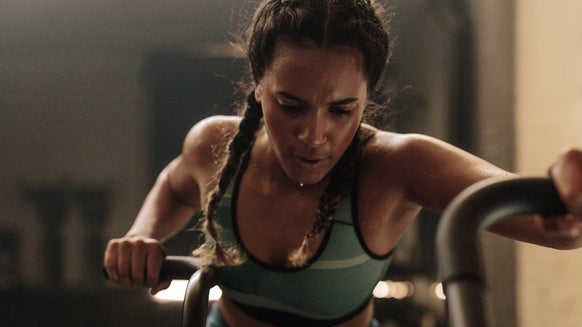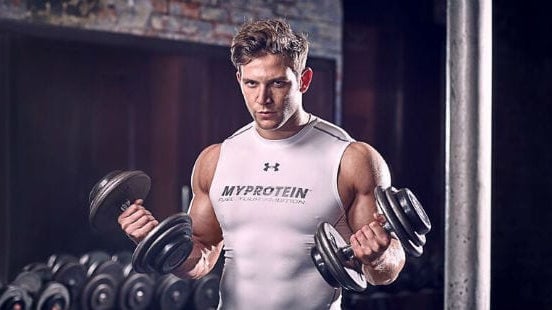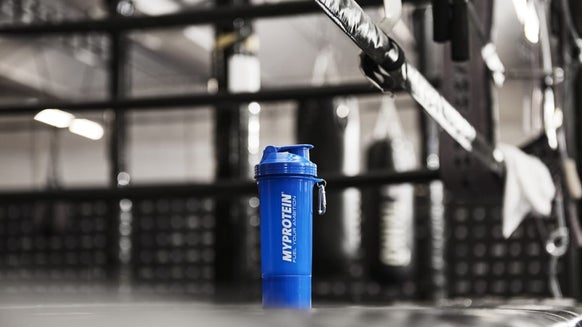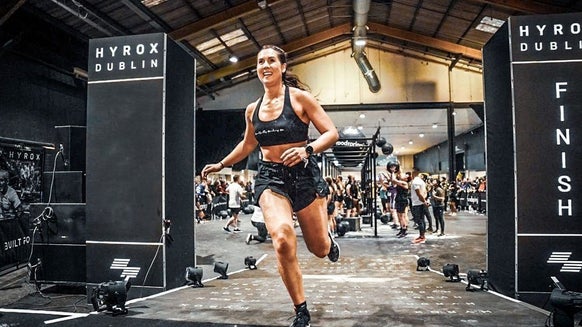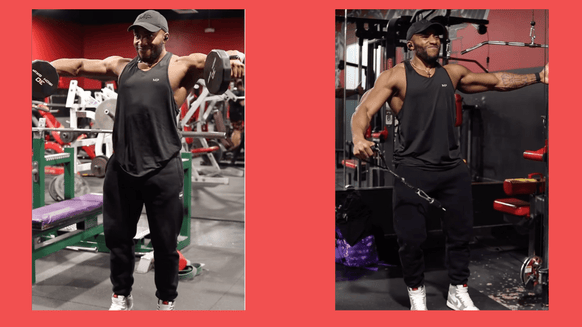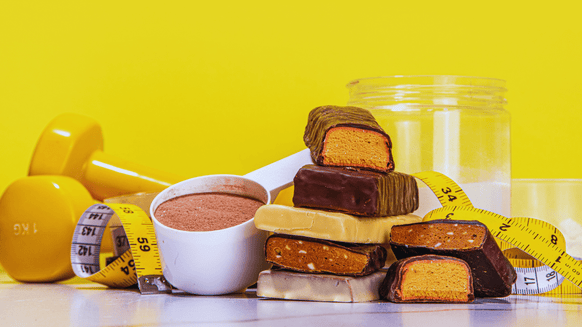
I get it. Keeping lunch interesting every single week can be tricky. Enter, the adult lunch box.
Instead of reaching for something just to “make it through", a nutritious lunch helps you to be just as productive in the afternoon as you were in the morning and avoid cravings. Plus, it can help massively towards any health and fitness goals you might have.
In this article I'm going to cover why and how to fall in love with lunches again, why they’re so important, and how you can build yourself the absolute perfect lunch box for all your daily adulting adventures!
- Why is lunch important?
- The secret to great work lunches
- Building a weight-loss lunch box
- Building a muscle-gain lunch box
- Adult lunch box must-haves
- Lunch box snack ideas
- Complete lunch box ideas
Why is lunch important?
Why is lunch important? It feels almost offensive to be asked this question as a nutritionist. Lunch is amazing. Does no one remember primary school lunch boxes packed with exciting little treats?
But nostalgia aside, lunches serve an important role in our lives.
They provide a welcome break in the day to briefly separate ourselves from work; a reprieve from emails, calls, and meetings with a wonderfully timed box of nutritious joy and peace.
When designed with care, a good lunch can help to push us ever further forward towards our goals.
They fuel us to avoid those mid-afternoon slumps, cravings, and drops in blood sugar, and aid muscle recovery.
Lunch is not to be skipped. Lunch is not to be avoided. Lunch is not to be forgotten.
They are to be welcomed. They are to be celebrated. And, they are to be created with the healthiest, happiest version of you in mind.
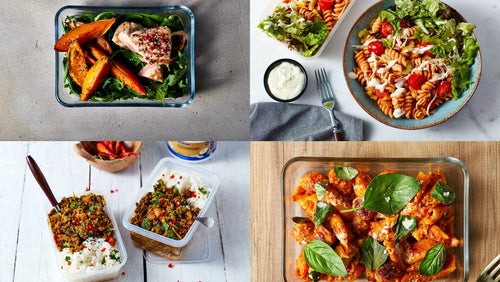
23 Meal Prep Recipes For Muscle Building & Fat Loss
You'll never have to wonder what to make for lunch again....
The secret to great work lunches
It’s not having a private chef (although, that would be lovely) or ordering them online in bulk; rather, the secret is… sticking to a lunchbox building blueprint.
Easy to make
I know that Instagram Buddha Bowl with 1,000 ingredients looks tempting, and while I’m sure it’s delicious, it’s not always realistic.
If you’re busy, which so many of us are, you need to make your meals as sustainable and easy-to-make as possible to avoid any unwanted cafe trips.
It doesn’t need to be “aesthetic”, it just needs to fuel you with everything you need to have a great day.
Variety
Variety, as they say, is the spice of life. Unfortunately, a lot of us can get bored after repeating the same lunch for weeks on end. So making little tweaks like a different protein, different veggie, etc. can really help you stay on track with prepping.
Travels & stores well
You want something practical to transport (ideally fitting into one handy lunchbox) and something that still tastes just as good a few hours or days after prepping.
Best lunchbox containers
Want to know something great? This is the best time to start loving lunches again. There are so many options for lunch box containers now with all the compartments you could want.
Myprotein has a few great options for lunch boxes, whether you just want one big easy container or multiple smaller ones for all your snacks and goodies.
Balanced and nutritious
The most important aspect to having the best work lunch is making sure it’s balanced and packed with the nutrients you need.
It goes without saying, we’re anti-restriction here, so be sure to include protein, plants, carbohydrates, and fats in your lunches — your body thrives when it has all these in tandem.
Adult lunch boxes for weight loss
Lunch boxes are a great tool for weight loss for several reasons, all tied to the control and convenience they offer.
When you pack your lunch, you're in charge of the ingredients and portion sizes, which means you can tailor your meals to fit your nutritional needs and weight loss goals. This makes it much easier to follow your energy and macronutrient needs and stay on track.
Having a balanced lunch packed and ready to go also limits the possibility of impulsive food choices which can often be processed foods that are more energy-dense. These cravings can sneak up on you throughout the day as your hunger increases and blood sugar levels drop.
The portion control aspect is also key; by packing your lunch, you can ensure you're eating just the right amount to fuel your body without overeating. Plus, you’re selecting the foods your body needs to recover and adapt to any exercise you’re doing.
Things to include in a weight loss lunch box
When focusing on weight loss, the goal is to include foods in your lunchbox that are nutritious, filling, and low in calories.
Here are some ideas for foods you might want to include for a weight loss lunch box.
Lean proteins
- Chicken breast
- Turkey
- Low-fat cheese
- Tofu
- Lean cuts of red meat
- Fish like cod or haddock
Lean proteins help keep you full for longer periods, reducing the likelihood of snacking on less balanced options. They also require more energy to digest, which can help boost metabolism (1).
I love fish but often find that having them contained in a lunch box overnight and/or throughout the morning can lead to a bit of a “smell” and certainly unleashes a pungent waft of fishiness when you finally open your lunchbox. But if fish is your thing, halibut, cod, and haddock are great lean options.
Fruits & veggies
- Berries
- Apples
- Oranges
- Leafy greens
- Carrots
- Bell peppers
These are high-packed full of fiber, vitamins, and minerals while being low in calories. Fruits and veggies like the above add bulk to meals, helping you feel full without adding a lot of calories. Their high fiber content also helps regulate digestion, contributing to weight loss (2).
Whole grains
- Quinoa
- Brown rice
- Whole wheat pasta
- Millet
- Barley
Whole grains like these provide sustained energy and keep you feeling full longer than their refined counterparts because they contain more fiber. This can help manage hunger and prevent overeating (3).
Healthy Fats
- Avocado
- Nuts
- Seeds
- Olive oil
Including a moderate amount of healthy fats in your lunchbox can increase satiety, making you less likely to reach for less balanced snacks later. These fats also support heart health and provide essential fatty acids your body needs (4, 5).
Yogurt or cottage cheese
These are good sources of both high-quality protein and calcium. Opt for low-fat or Greek yogurt to get a good dose of protein with fewer calories. They can also be beneficial for gut health, thanks to their probiotic content.
Hard-boiled eggs
Easy to prepare in advance and portable, eggs are a great source of protein and can help keep you feeling full. Be wary though; they don’t always have the nicest smell when opening the container. Be sure to wait until they’ve cooled down before adding them to your lunchbox to help minimize the smell!
Adult lunch boxes for muscle gain
Building muscle requires a strategic approach to nutrition, focusing on increasing calorie and protein intake to fuel muscle repair and growth.
You can transfer many of the same principles and foods over from building a lunchbox designed for weight loss as these are centered around nutritious foods that contribute to fueling recovery and body composition.
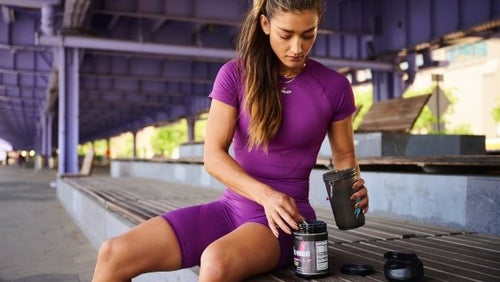
Creatine Pills vs. Powder | Which Is Better?
Creatine pills vs. powder and everything you need to know about the supplement. ...
Protein sources
- Chicken breast
- Turkey
- Salmon
- Mackerel
- Beef
A lot of the protein sources for a weight loss box work for muscle gain too. But you can add in things like fattier cuts of beef and oily fish like salmon and mackerel.
These are excellent sources of high-quality protein and, for the fish, are rich in omega-3 fatty acids, which may help reduce inflammation and support muscle recovery, performance, and function (6).
Portion sizes
Your portion sizes may be a little bigger here if the goal is muscle gain but of course that will depend entirely on the framework of your entire daily food intake.
Energy-dense foods
- Almonds
- Chia seeds
- Flaxseeds
- Walnuts
- Avocados
- Olive oil
Almonds, chia seeds, flaxseeds, and walnuts provide healthy fats, protein, and calories needed for muscle building. They’re also packed with antioxidants and essential nutrients like magnesium, which is important for muscle function.
Avocado and/or olive oil are sources of monounsaturated fats, they support hormone levels and provide the energy your body needs for muscle building without contributing to unhealthy fat accumulation.
Eggs & dairy
Cheeses, eggs, and dairy products are packed full of muscle-building, high-quality protein that’ll help you get up that energy intake. Going for the regular versions rather than the low-fat may be best if you’re trying to up your daily cals.
Building the perfect adult lunchbox
Balance is key to the perfect lunchbox.
Macronutrients, or “macros”, refer to the three key food groups: proteins, carbohydrates, and fats, with each serving essential roles in our body's functioning and health.
A balanced intake of these nutrients is crucial for supporting energy levels, muscle growth and repair, and overall metabolic health, ensuring the body operates optimally.
Let’s briefly talk about why they matter and some quality sources you’ll want to consider.
Protein
Dietary protein is, in my opinion, the most important macronutrient. Protein is composed of amino acids, which are the building blocks of our body's cells and tissues.
The importance of protein spans across the day as it helps stabilize blood sugar levels, providing sustained energy and reducing undesired snacking.
For weight loss, protein enhances satiety and increases metabolic rate, aiding in fat reduction while preserving lean muscle mass.
In muscle building, it's essential for repairing and growing muscle tissue, especially after exercise. For those aiming for weight gain, protein supports the addition of muscle mass rather than fat.
Beyond these goals, adequate protein intake is vital for overall health, supporting immune function, hormone production, and the health of hair, skin, and nails.
Experts recommend distributing your protein intake across your meals for optimal muscle protein synthesis (7).
Try to aim for around 25 to 30g of protein per meal, and 10g for snacks. It would be worth noting that too high a protein intake may conflict with intakes of other nutrients and/or cause digestive issues that can be very uncomfortable.
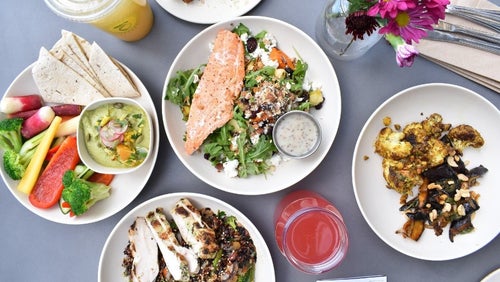
14 Foods Surprisingly High In Protein
The underdogs of the protein world have entered the chat......
Good sources of protein for lunch
- Grilled chicken breast
- Salmon fillet
- Mackerel fillet
- Lean cuts of red meat
- Hard-boiled eggs
- Greek yogurt
- Cottage cheese or other forms of higher protein cheese
- Tofu (firm or extra firm)
- Sliced turkey breast
- Chickpeas or edamame beans
Carbs
Dietary carbohydrates are essential for providing the body with its primary energy source and are crucial for brain function and supporting physical activity.
Fiber-rich carbs like whole grains, vegetables, and fruits improve digestion, enhance satiety, and provide a steady energy release (9).
Consuming simple carbs like fruits or energy bars closer to training can offer an immediate energy boost, optimizing workout performance and aiding in quicker recovery (9).
The aim is not to be restrictive but to balance high-quality, fiber-rich carbs throughout the day, along with strategic timing of simple carbs to support overall health, energy levels, and athletic performance.
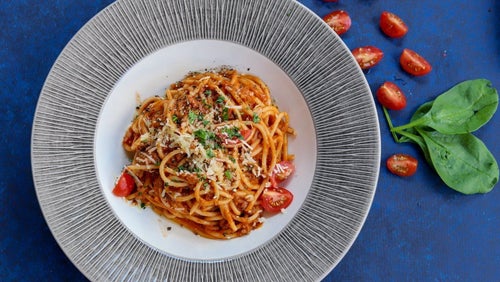
Why Carbs Aren't The Enemy | Different Types of Carbohydrates & Benefits
It's time to make friends with carbs......
- Quinoa
- Sweet potato
- Brown rice
- Whole wheat pasta
- Barley
- Oats
- Chickpeas
- Lentils
- Black beans
- Whole grain bread
- Bananas
- White rice
- Dried fruit
- Baked goods
- Rice cakes
Fats
Healthy dietary fats, including monounsaturated and polyunsaturated fats, are essential for overall health, playing a crucial role in absorbing vitamins, supporting cell growth, and protecting organ health. Throughout the day, they provide sustained energy, aid in satiety, and can help stabilize blood sugar levels.
Quality of dietary fat is paramount; sources like avocados, nuts, seeds, and olive oil are rich in nutrients and beneficial for heart health (5).
Trans fats and excessive saturated fats, found in processed foods, should be minimized due to their association with health risks. Prioritizing high-quality fats supports long-term health, energy levels, and well-being (5).
- Avocado
- Almonds
- Walnuts
- Chia seeds
- Flaxseeds
- Olive oil (for salads or drizzling)
- Natural peanut butter
- Sunflower seeds
- Pumpkin seeds
- Fatty fish (like salmon or mackerel)
Fruits & veggies
Fruits and vegetables are vital for maintaining overall health due to their high content of vitamins, minerals, antioxidants, and dietary fiber.
Having a variety of these throughout the day ensures a steady intake of nutrients essential for immune function, digestion, and preventing chronic diseases.
Packing plenty of fruit and veg in at lunch also increases meal volume and fiber content, enhancing satiety without significantly adding calories. This can aid in weight management and ensure sustained energy levels throughout the afternoon.
- Carrot sticks
- Cherry tomatoes
- Sliced bell peppers
- Cucumber rounds
- Apple slices
- Berries (strawberries, blueberries, raspberries)
- Orange segments
- Grapes
- Snap peas
- Sliced mango
Sweet treats and snacks
Enjoying the foods you love, including sweet treats, is essential for a sustainable and balanced approach to achieving fitness goals.
Restriction can lead to cravings and eventually overeating, which can be incredibly detrimental to your relationship with food.
Incorporating favorite foods in moderation allows for satisfaction and mental well-being, making dietary habits more enjoyable and sustainable.
High-protein snacks, like protein bars, can be especially useful in this balanced approach. They are super tasty while providing valuable nutrients and protein, supporting muscle repair and growth, and keeping you fuller for longer. This strategy ensures that pursuing fitness goals doesn't mean giving up the joy of eating but rather finding a healthier balance that includes all your favorites!
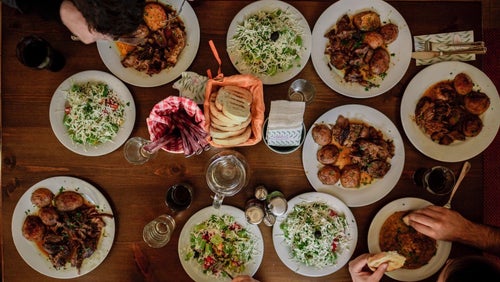
Food Calories Chart | What's In Your Fruit, Veg, Meat, And Other Daily Produce?
A guide on the calorie content of everyday foods....
Tasty snack ideas for your lunchbox
- Trail Mix: Combine nuts, seeds, and dried fruit for a sweet and crunchy snack.
- Greek Yogurt Parfait: Layer yogurt with berries and a sprinkle of granola.
- Hummus and Veggie Sticks: Dip carrots, bell peppers, and cucumbers into creamy hummus.
- Protein bars: Myprotein Layered Bars, Crispy Wafers, and more.
- Protein Cookies
- Cheese Cubes and Whole Grain Crackers: A satisfying mix of protein and fiber.
- Apple Slices with Peanut Butter: A classic pairing that's both tasty and filling.
- Pancakes
- Air-popped Popcorn: Lightly seasoned with a touch of sea salt for a healthier, whole-grain snack.
- Protein Balls: Made with oats, peanut butter, and chocolate chips for a protein-packed treat.
- Mini Rice Cake Sandwiches: Spread with almond butter and banana slices.
- Dark Chocolate Covered Almonds: For a sweet yet heart-healthy indulgence.
Complete adult lunch box ideas
Here are some practical recipes you can try for simple throw-together lunches that require limited prep-time but deliver big on macros.
Vegetarian lunch box
- 200 g canned chickpeas, drained and rinsed
- 150 g Greek yogurt
- 1 tablespoon lemon juice
- 1/2 teaspoon garlic powder
- Salt and pepper to taste
- 50 g diced cucumber
- 50 g diced tomato
- 20 g chopped fresh mint or parsley
- 2 large whole wheat tortillas
- In a medium bowl, mix the Greek yogurt with lemon juice, garlic powder, salt, and pepper until well combined.
- Add the chickpeas, cucumber, tomato, and fresh herbs to the yogurt mixture and stir until everything is evenly coated.
- Divide the chickpea and yogurt salad between the whole wheat tortillas, placing the mixture in the center of each tortilla.
- Roll up the tortillas tightly, folding in the sides to enclose the filling. Pack in your lunchbox and then keep in the fridge overnight.
Pescatarian lunch box
- 2 salmon fillets
- 1 tsp. fresh ginger
- 1 garlic clove
- 1 tbsp. soy sauce
- 2 tbsp. oyster sauce
- 2 tbsp. sweet chili sauce
Make the salmon according to this recipe, and add to the pita with cucumber and whatever other veggies you like.
Vegan lunch box
This crispy tofu is the perfect vegan lunch option to keep you full for ages. Another option is to tweak this recipe by marinating the tofu in the teriyaki sauce, and adding them to a wrap with some salad if you don't like noodles.
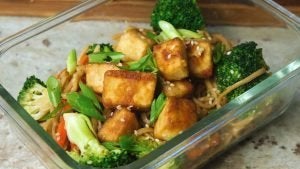
Crispy Tofu & Teriyaki Noodle Meal Prep
Mix up your weekly meal prep with some veggie noodles. ...
Gluten-free lunch box
Make this meal gluten-free by simply swapping the soy sauce for the gluten-free version.
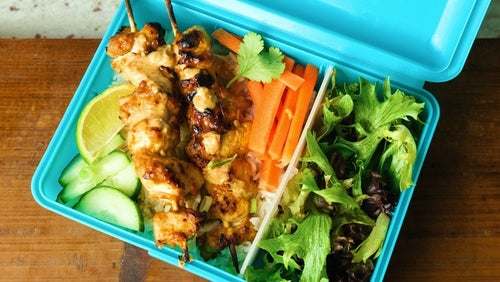
Easy Chicken Satay Meal Prep
When peanut butter is involved, you know it’s going to be good....
Sweet lunch box
Savory lunch box
Take home message
By the end of this article, you should have one clear takeaway; these people love their lunches and their lunchboxes.
Just kidding (although we seriously do). But ultimately, lunch is incredibly important, and should never be skipped. It’ll keep your mind and body going for the day, and help you reach whatever health and fitness goal you're after.
Here’s to lunchtime. Long live the lunchbox.
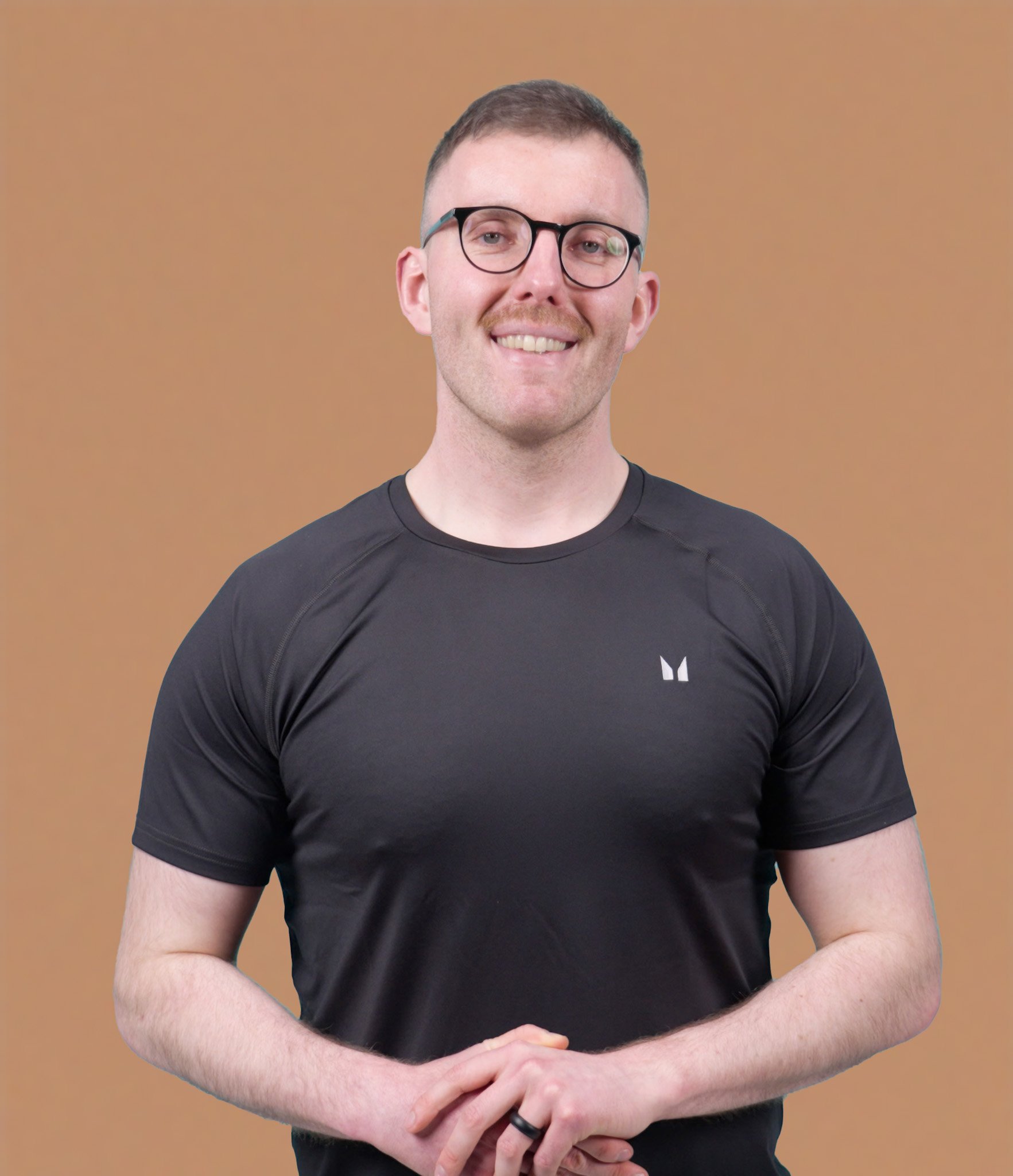
- Moon J, Koh G. Clinical Evidence and Mechanisms of High-Protein Diet-Induced Weight Loss. J Obes Metab Syndr. 2020 Sep 30;29(3):166-173. doi: 10.7570/jomes20028. PMID: 32699189; PMCID: PMC7539343.
- Miketinas DC, Bray GA, Beyl RA, Ryan DH, Sacks FM, Champagne CM. Fiber Intake Predicts Weight Loss and Dietary Adherence in Adults Consuming Calorie-Restricted Diets: The POUNDS Lost (Preventing Overweight Using Novel Dietary Strategies) Study. J Nutr. 2019 Oct 1;149(10):1742-1748. doi: 10.1093/jn/nxz117. PMID: 31174214; PMCID: PMC6768815.
- Maki KC, Palacios OM, Koecher K, Sawicki CM, Livingston KA, Bell M, Nelson Cortes H, McKeown NM. The Relationship between Whole Grain Intake and Body Weight: Results of Meta-Analyses of Observational Studies and Randomized Controlled Trials. Nutrients. 2019 May 31;11(6):1245. doi: 10.3390/nu11061245. PMID: 31159235; PMCID: PMC6627338.
- Samra RA. Fats and Satiety. In: Montmayeur JP, le Coutre J, editors. Fat Detection: Taste, Texture, and Post Ingestive Effects. Boca Raton (FL): CRC Press/Taylor & Francis; 2010. Chapter 15. Available from: https://www.ncbi.nlm.nih.gov/books/NBK53550/
- Forouhi NG, Krauss RM, Taubes G, Willett W. Dietary fat and cardiometabolic health: evidence, controversies, and consensus for guidance. BMJ. 2018 Jun 13;361:k2139. doi: 10.1136/bmj.k2139. PMID: 29898882; PMCID: PMC6053258.
- Jeromson S, Gallagher IJ, Galloway SDR, Hamilton DL. Omega-3 Fatty Acids and Skeletal Muscle Health. Marine Drugs. 2015; 13(11):6977-7004. https://doi.org/10.3390/md13116977
- Schoenfeld, B.J., Aragon, A.A. How much protein can the body use in a single meal for muscle-building? Implications for daily protein distribution. J Int Soc Sports Nutr 15, 10 (2018). https://doi.org/10.1186/s12970-018-0215-1
- Mamerow MM, Mettler JA, English KL, Casperson SL, Arentson-Lantz E, Sheffield-Moore M, Layman DK, Paddon-Jones D. Dietary protein distribution positively influences 24-h muscle protein synthesis in healthy adults. J Nutr. 2014 Jun;144(6):876-80. doi: 10.3945/jn.113.185280. Epub 2014 Jan 29. PMID: 24477298; PMCID: PMC4018950.
- Kerksick, C.M., Arent, S., Schoenfeld, B.J. et al. International society of sports nutrition position stand: nutrient timing. J Int Soc Sports Nutr 14, 33 (2017). https://doi.org/10.1186/s12970-017-0189-4
